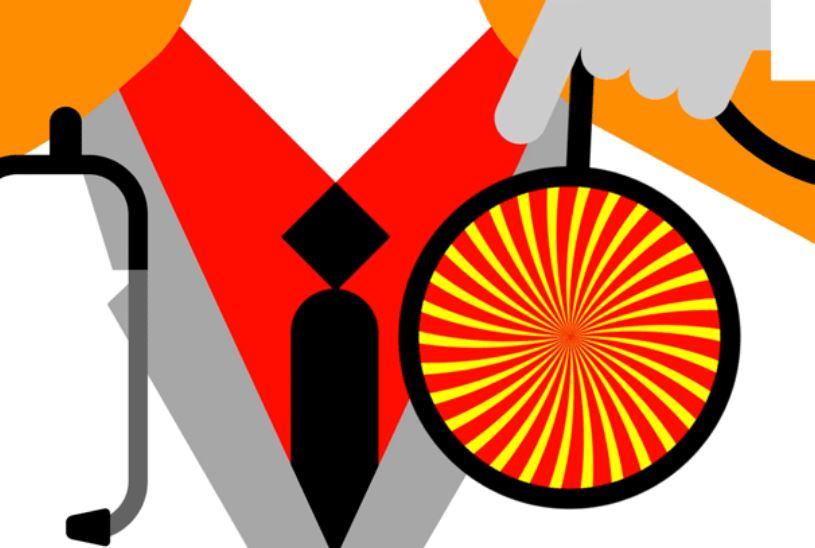
 A meta-analysis examines treatments like meditation and cognitive behavioral therapy as alternatives for alleviating pain that is typically treated with opioids.
A meta-analysis examines treatments like meditation and cognitive behavioral therapy as alternatives for alleviating pain that is typically treated with opioids.
The more we learn about opioids, the clearer it becomes that there’s no simple solution to the opioid crisis and the cycle of dependency and misuse that has already impacted millions of Americans.
It’s especially difficult given how effective opioids are at pain management, particularly the kind of acute, short-term pain associated with cancer treatment or surgical or injury recovery.
Researchers are actively seeking alternatives to opioids when it comes to pain management—and a meta-study tracking the efficacy of mind-body therapies for treating pain that was previously managed with opioids indicates that some MBTs could act as effective pain management treatments, as well as tools for helping reduce opioid use and dependency.
The survey examined 60 studies looking at the effectiveness of “psychologically oriented MBTs,” including meditation, hypnosis, guided imagery, relaxation, cognitive behavioral therapy, and therapeutic suggestion, at pain management and/or opioid use outcomes.
The overview found a moderately significant association between MBTs and pain reduction and a smaller significant association between MBTs and reduction of opioid doses, as well as some relationship between MBTs and the treatment of opioid misuse and cravings.
Meditation was found to have the strongest correlation with pain reduction. The five meditation-related studies reviewed all showed participants experiencing some level of pain relief from the therapeutic treatment.
Four of the five studies also found meditation and mindfulness resulted in “opioid-related outcomes,” including decrease in opioid dosage, decreased cessation time, and dips in opioid misuse and cravings.
Hypnosis and CBT were also associated with positive opioid-related outcomes, with 12 of 23 hypnosis studies and four of the seven CBT studies reviewed showing “significant therapeutic effects” on opioid use.
Eric Garland, the study’s lead author, said his background in social work led him to a better understanding of the relationship between MBTs and pain, as well as the one between MBTs and opioids. “I’m a licensed clinical social worker,” Garland told VICE. “I’ve used mind-body therapies both for the treatment of chronic pain as well as the treatment of addictive behaviors.”
He said opioid misuse, pain, and MBTs all have one major factor in common: the brain. “Mind-body therapies make a lot of sense for the treatment of pain since all pain is in the brain.
If you use a technique that changes the way the brain functions, that changes the way the brain interprets signals from the body and therefore it will affect the experience of pain, as well as the person’s emotional reaction to pain.”
Since long-term opioid use can lead to brain changes like opioid tolerance and a loss of the ability to self-regulate opioid usage, MBTs can play a dual role for someone already using prescription drugs to manage their pain, Garland said.
“[MBTs] are all about teaching people a way to regain some of that control over the function of the brain and so therefore it can be useful not only for reducing the pain and helping the patient manage the pain, but also helping them gain better control over their opioid use itself.”
Does this mean people with opioid use disorder or who are living with pain from other medical procedures can ditch the Oxycontin and just fire up a ‘Yoga with Adrienne’ video? Of course not.
 Research has shown that mindfulness and opioids don’t operate on the same parts of the brain, for starters, which means MBTs are a better side-by-side treatment than a ready-made substitute for medication.
Research has shown that mindfulness and opioids don’t operate on the same parts of the brain, for starters, which means MBTs are a better side-by-side treatment than a ready-made substitute for medication.
The 60 studies surveyed included a total of 6404 participants who were already taking opioids, which averages out to around 100 people per study—a sample group too small to base conclusive solutions on.
Authors were careful to note that different MBTs were applied to different types of pain, with meditation studies tending to target chronic pain while hypnosis, relaxation, therapeutic suggestion and guided imagery treatments were more likely to be applied to acute pain.
Garland also said in the future, he hopes more research will focus on the relationship between MBTs and opioid use, rather than just the relationship between MBTs and pain.
By: Katie Way

 Hypnosis has been shown to be an effective treatment for irritable bowel syndrome (IBS) in a number of clinical studies.
Hypnosis has been shown to be an effective treatment for irritable bowel syndrome (IBS) in a number of clinical studies.
Hypnotherapy for IBS involves progressive relaxation, and then suggestions of soothing imagery and sensations focused on the individual’s symptoms.
Improvements in overall well-being, quality of life, abdominal pain, constipation, diarrhea, and bloating have been noted.
Contrary to many portrayals in fiction, a clinical hypnotherapist has no power over the hypnotized person. The person is typically aware of what happens both during and after the hypnosis session.
The treatment is generally comfortable and also can be effective when people are treated in groups.
Research has found that hypnotherapy may help improve the primary symptoms of IBS. It may also help relieve other symptoms suffered by many people with IBS such as nausea, fatigue, backache, and urinary problems. Hypnotherapy appears to offer symptomatic, psychological, and physiological benefit.
However, hypnosis should not be regarded as a cure-all. Up to 25% of patients fail to respond. Even when people do improve, conventional approaches to treatment should not always be ignored.
It is still important that lifestyle factors such as diet are also taken into account. In addition, some people may find that an occasional loperamide or laxative, depending on the bowel habit abnormality, may be required.
Do the effects of hypnotherapy last once a course of treatment has been completed? Research on the long-term follow up of patients who have benefited shows that after a period of between 1 and 5 years, most remain well with many requiring no further medication at all.
Hypnotherapy can be a time-consuming and costly approach in the short term. However, as a result of the sustained benefits of treatment, it has been calculated that it becomes cost effective within 2 years when compared to conventional approaches.
How to select a hypnotherapist
Many individuals practice hypnosis that are not qualified to treat medical problems. Look for someone who treats medical problems with hypnosis.
Then get answers to the following three questions:
Is this person a licensed health professional? Be aware that hypnosis certificates and vanity letters after the person’s name such as C. Ht. (“certified hypnotherapist”) mean nothing in terms of clinical qualifications. Only state-licensed health professionals (such as doctors, psychologists, nurses, clinical social workers) should treat IBS.
 Does this person have formal training and significant experience in clinical hypnosis? Using hypnosis with good success requires considerable skill and knowledge. In general, 50 hours or more of certified workshop training in hypnosis would be good, although less is sometimes adequate.
Does this person have formal training and significant experience in clinical hypnosis? Using hypnosis with good success requires considerable skill and knowledge. In general, 50 hours or more of certified workshop training in hypnosis would be good, although less is sometimes adequate.
Does this person know the details of successful hypnosis treatment protocols for IBS? Hypnosis in itself is probably not sufficient to treat IBS effectively. Specific gut-directed suggestions and imagery need to be included.
Many major health insurance plans in the US reimburse for IBS treatment with hypnosis when it is billed as psychological treatment under the mental health portion of the plans.
Summary
Hypnosis is just one of many in the treatment options for IBS. Other psychological methods, cognitive therapy in particular, are also effective options.
Hypnosis may be especially suitable when severe chronic symptoms continue after standard medical management approaches have been tried. It has become clear that in such cases, hypnosis treatment can often produce major improvement that can last for years.
AboutIBS.org

 This is a truly ground-breaking study. It’s the first one to study the effects of various areas of the brain before and after hypnosis in people with dental phobias. While it’s a relatively small sample size, it’s a push in the right direction. Out of the 24 people involved in the study, 12 were dental phobics and the other 12 were the control group.
This is a truly ground-breaking study. It’s the first one to study the effects of various areas of the brain before and after hypnosis in people with dental phobias. While it’s a relatively small sample size, it’s a push in the right direction. Out of the 24 people involved in the study, 12 were dental phobics and the other 12 were the control group.
This study illustrates the fact that anxiety-provoking stimuli can be reduced via hypnosis. This includes the actual dental surgery, endodontic treatments, and a low amount of anesthesia. It also shows that the fear centers of the brain changed as well. Using fMRI (functional magnetic resonance imaging) various fear structures of the brain were researched.The conclusion so far is hypnosis is a powerful method inhibiting reaction of fear circuitry structures in dental phobics. [more]
By: Hypnosis Training Academy

 Medical Hypnotherapy can be a powerful method to treat various mental health conditions. By creating a calm and controlled environment, it allows patients to focus on their deepest disruptions.
Medical Hypnotherapy can be a powerful method to treat various mental health conditions. By creating a calm and controlled environment, it allows patients to focus on their deepest disruptions.
What is hypnosis treatment?
Medical hypnotherapy works through its ability to remove all distraction from the mind of the patient, and speak clearly and directly about personal habits that need their attention. It is often used to help change the behaviors of the patient, but does not rely on manipulation, coercion or compulsion to achieve a positive outcome.
Misconceptions about hypnosis treatment are commonplace, but its real utility as a treatment option comes from its clean approach (no drugs or chemicals are used) and its success in de-cluttering the mind of stresses and disruptions, thereby allowing the patient to focus completely on the task at hand.
Many patients benefit from hypnosis for anxiety and depression, while others use it to break free from phobias, eating disorders, burnout, or learned behaviors such as smoking. Sexual dysfunction and pain management are among the other frequent areas of focus for which hypnosis treatment can be useful.
Medical hypnotherapy is often used in conjunction with cognitive behavioral therapy – a treatment combination which has proven to be particularly effective in achieving improved patient health.
How does medical hypnotherapy work?
Medical hypnotherapy allows the patient to imagine in detail a source of anxiety while in a controlled setting. The patient is then encouraged to enter a state of deep  relaxation, rather than allowing the anxiety to grow. This paired activity helps the brain to associate the potential anxiety trigger together with a calmer state of mind, allowing the brain to begin building new and healthier pathways of behavior and emotional response.
relaxation, rather than allowing the anxiety to grow. This paired activity helps the brain to associate the potential anxiety trigger together with a calmer state of mind, allowing the brain to begin building new and healthier pathways of behavior and emotional response.
At the same time, the hypnotherapist provides calming suggestions for the patient under hypnosis, in an effort to show him or her a path toward healthier living. Included in these messages is an invitation to view the world in a more positive light, by embracing a generous outlook toward the surrounding environment.
During each hypnotherapy session, the patient remains awake and lucid, and in full control of every decision regarding whether or not to act upon the suggestions made by the hypnotherapist. The duration of treatment varies according to the condition being treated, as well as the mental state of the patient.
The treatment process
Hypnosis treatment begins in earnest when the hypnotherapist helps the patient achieve a trance-like state, in which external distractions are removed and the voice of the hypnotherapist is placed at the center of the patient’s consciousness.
Once in this state, the patient is encouraged to explore inner thoughts and feelings, which he or she is able to see with the type of rare clarity that is commonly associated with meditation. This newfound concentration lets patients use all of their inner resources to contemplate the issues that otherwise trouble them – whether alcohol, cigarettes or other drugs; traumatic events; or conditions which ordinarily cause stress for the patient.
The hypnotherapist acts as a guide for the patient during this period of exploration, suggesting a calm and observational approach to each distressing phenomenon, rather than an instinctive emotional reaction. After a period of contemplation, including mental encounters with the provocative stimuli, the hypnotherapist encourages the patient to enter a state of deep relaxation.
Through each successive treatment, the patient learns to cope with the reality of the thing feared, or the object of obsession – and then observe it from a detached space, before moving past it and into a state of tranquility. The lesson of detachment and balance becomes a learned skill, empowering the patient to deal with stressors in a healthier way in everyday life.
 Key benefits of hypnosis for anxiety and depression
Key benefits of hypnosis for anxiety and depression
Hypnosis has a broad range of applications, due to its general ability to improve the power of concentration and suggestion. Common benefits of medical hypnotherapy include:
• Increased ability to focus on stressful objects and ideas while remaining emotionally balanced
• Increased ability to detach from obsessive behaviors and habits, including smoking
• Increased tolerance for pain under certain conditions
• A more positively oriented worldview
• Renewed feelings of self-control
• Reduced feelings of depression or anxiety, and recovery from burnout
By creating new conditions for personal empowerment, hypnosis gives patients the internal tools needed to overcome the unhelpful group of emotions and behaviors that caused them to seek treatment.
How successful is hypnosis treatment?
Natural human variability means that some people are more open to suggestibility and hypnosis than others. In general, however, it is effective to use hypnosis for anxiety and depression as part of a larger course of treatment.
In particular, studies show that cognitive behavioral therapy (CBT) provides an effective complement to hypnosis treatment for conditions such as acute stress disorder.
A more general meta-analysis reveals widespread improvement in many areas due to the combination of hypnosis with CBT. The study also found sustained improvements after measuring patient outcomes long after the period of treatment had ended.
Though it does not promise a complete cure in all cases, it is clear that hypnosis, with its ability to clear away the noise of day-to-day life during therapy sessions, can have a significant, positive, and long-lasting effect on behavior modification.
If you or someone you know experiences mental health issues, it is important to seek help from a qualified professional.
By: Chris Jansen

 Doctors and researchers at MD Anderson are exploring hypnosedation to manage pain and anxiety during certain breast cancer surgeries.
Doctors and researchers at MD Anderson are exploring hypnosedation to manage pain and anxiety during certain breast cancer surgeries.
When Beverly Levinson’s doctor noticed two unusual spots on her dense breasts, she was sent to The University of Texas MD Anderson Cancer Center for a lumpectomy—a surgical procedure to remove abnormal or cancerous tissue along with a small portion of the surrounding healthy tissue.
Levinson, 64, wasn’t as concerned about the surgery as she was about undergoing general anesthesia. She had received general anesthesia for previous surgeries, but because of her temporomandibular joint (TMJ) disorder, she suffered severe jaw pain from opening her mouth wide enough for the breathing tube to be inserted down her throat.
Luckily, an unconventional solution presented itself to Levinson. Her surgeon approached her about an ongoing clinical trial that would allow her to avoid general anesthesia by using hypnosis. Levinson, who had been hypnotized for jaw pain years ago, immediately jumped at the opportunity.
“In my eyes, I had nothing to lose,” Levinson said. “I could try something new or I could go the old-fashioned way. I’m the middle child. I always try new things. That’s my personality.”
Led by Lorenzo Cohen, Ph.D., director of the Integrative Medicine Program at MD Anderson, the ongoing clinical trial aims to determine whether or not a method of deep relaxation, called hypnosedation, is safe and effective for patients with stage 0/1 breast cancer who are undergoing lumpectomies with or without sentinel lymph node dissections.
The study, still in its pilot phase, will examine 50 patients who are randomly selected to receive either general anesthesia or a combination of local anesthesia and hypnosedation before and during surgery.
In both cases, a patient has an intravenous line placed in her arm and an anesthesiologist is present to administer a cocktail of drugs used to put her under.
For patients receiving hypnosis, the anesthesiologist monitors their vitals, calculates the appropriate dose of local anesthetic medication, administers medication for pain and nausea and stands by to convert to general anesthesia if the patient experiences any discomfort.
“Over the past couple of decades there is a very solid evidence base that incorporating hypnosis during invasive conscious sedation medical procedures reduces  anxiety, helps to control pain, decreases recovery time, and helps lower medical costs,” Cohen said.
anxiety, helps to control pain, decreases recovery time, and helps lower medical costs,” Cohen said.
General anesthesia is still the standard approach at MD Anderson, even for smaller surgeries, such as lumpectomies. But the drugs used for general anesthesia can potentially weaken the body’s immune system and slow the recovery process, Cohen said.
Cancer patients, in particular, cannot afford to have their immune systems compromised. Cohen and his team want to find out if hypnosedation would be a viable replacement for general anesthesia during smaller, less invasive surgeries.
The practice of hypnosis, in one form or another, has been around for centuries. But it wasn’t until the mid-19th century that it came to be defined as a kind of “nervous sleep” that could alleviate anxiety or pain during medical procedures.
In the 1840s, Scottish neurosurgeon James Braid developed a technique of deep relaxation and visual fixation to guide patients into a trance and help alleviate their pain.
He coined the term “hypnosis” and defined it as “the induction of a habit of abstraction or mental concentration, in which … the powers of the mind are so much engrossed with a single idea or train of thought, as … to render the individual unconscious of, or indifferently conscious to, all other ideas, impressions, or trains of thought.”
Although hypnosis is often associated with parlor tricks and stage magicians, the practice itself has been used clinically to address several conditions, including smoking, anxiety and overeating.
For Levinson, it was a great option. A week before surgery, Levinson met with Rosalinda Engle, a mind-body specialist at MD Anderson Cancer Center who would perform the hypnosedation, in a small conference room in the hospital.
 “Do you have a place where you feel really comfortable and at ease?” Engle asked Levinson in her soothing, mellifluous voice. “It could be your grandmother’s house.
“Do you have a place where you feel really comfortable and at ease?” Engle asked Levinson in her soothing, mellifluous voice. “It could be your grandmother’s house.
It could be a vacation you’ve enjoyed, a vacation spot. It could be anywhere, any place in nature. Close your eyes and call that up.”
As Levinson focused on the task, Engle continued to offer instruction.
“Breathe in deeply. Experience your breath from the tip of your nose. Feel as your breath moves through your body. Imagine breathing into the palm of your hands. Now exhale. Breathe out through your fingers, the soles of your feet, your toes. Relax.”
Slowly but surely, Engle lulled Levinson into a state of deep relaxation.
“I felt very, very safe,” Levinson said, when it was over. “It was like [going] into someone’s house where they’re baking a cake. It smells good, and they welcome you in. You just have a warm feeling.”
Engle guided Levinson through what to expect on the day of the surgery. The room would be sterile, with five or six people at hand. The lights would be bright. Engle would sit beside her throughout the procedure to keep her calm and relaxed.
“My sole job is to sit at the head of the bed and focus on the patient,” Engle said. “Any changes to breathing patterns [or] facial muscles will alert me that I need to check in. Periodically, I’ll ask the patient, ‘How’s your comfort level?’”
On the day of the surgery, doctors injected local anesthetics— lidocaine and bupivacaine—to numb Levinson’s right breast and made a 1-inch incision to remove some of the tissue.
As promised, Engle sat next to Levinson for the duration of the surgery, helping her maintain a state of deep relaxation.
“I didn’t feel anything,” Levinson said. “You’re in a calm state. You’re in a safe state of mind. You’re being reassured. It was great.”
Throughout the surgery, Levinson recalled feeling pressure on her breast as the surgeon operated, but said it didn’t hurt any worse than getting a filling at the dentist.
Less than an hour after her surgery was complete, Levinson was out of bed, dressed and walking around. She skirted the unpleasant side effects of general anesthesia, recovered faster and didn’t require any post-operative painkillers.
For hypnosedation to work, Engle said, the patient must be receptive to it.
“All hypnosis is self-hypnosis,” Engle said. “You’ll go as deep into this trance state as you are willing to allow yourself to go.”
Engle points to shifts in attention and consciousness that people commonly experience throughout the day. Ordinary moments—such as zoning out while driving or becoming so engrossed in a conversation that you’re able to block out surrounding noise—are examples of how the mind can tune out distractions.
“Pointing out these everyday shifts and our capacity for absorption is important to let the patients know they are in control and driving this experience,” Engle said. “They can train themselves to be as relaxed and calm as possible.
 They can guide themselves. They can walk through this experience with surgery and take it throughout the treatment process, the whole continuum of cancer care.”
They can guide themselves. They can walk through this experience with surgery and take it throughout the treatment process, the whole continuum of cancer care.”
While general anesthesia is very safe for most people, it can have unpleasant side effects. The most common are temporary nausea and vomiting, dry mouth, a sore throat and grogginess.
Older patients who receive general anesthesia are more likely to experience longer-term cognitive and memory impairments, a condition called post-operative cognitive dysfunction (POCD) that can last anywhere from a few days to a few months. Those with a history of POCD have a higher risk of experiencing the condition again with repeated anesthetic.
“[Hypnosedation] is a nice alternative,” said Elizabeth Rebello, M.D., associate professor in the department of anesthesiology and perioperative medicine at MD Anderson. “The patient doesn’t require an extended period of time in the recovery room. They’re able to go on with the rest of their life.”
According to Cohen, more than 34 clinical trials and numerous papers published in scientific journals have shown that hypnosedation works. But he says there is still some doubt among his colleagues.
“Although a physician may think, ‘I don’t believe in hypnosis,’ that is a scientifically unsound statement. Science is not about personal belief. It’s about evidence,” Cohen said.
“Your religious practices are part of a belief system. Science is evidence-based. Unfortunately, there are some people who approach science from a belief perspective, as well, and they’re wrong.”
Most surgeons were initially reluctant to participate in the clinical trial, said Dalliah M. Black, M.D., a breast surgical oncologist at MD Anderson.
Because the standard approach at MD Anderson is to use general anesthesia for surgeries large and small, most surgeons are accustomed to having their patient sleep throughout every procedure.
“Surgeon interest was very slow up front, but I would offer them to come in to watch my cases,” Black said. “Many colleagues have been so surprised.”
Using hypnosedation, patients like Levinson can gain some semblance of control during an otherwise stressful experience.
“It’s amazing how complex we are as humans and how complex the mind is. A lot of times, it’s mind over matter,” Black said. “Hypnosedation is a way we’ve applied mind over matter to a situation in the operating room for a specific population of the patients here.
That mental fortitude and the strength that we have, that has to be carried through and has better outcomes if we use that path throughout our cancer care.”
No matter how effective the clinical trial shows hypnosedation to be for surgeries, Rebello stressed that hypnosedation will not become a new standard approach for pain management.
“I think there’s a concern that this is going to replace general anesthesia. It is not going to replace general anesthesia,” Rebello said. “But for a certain niche of patients, there are certainly some benefits that could exist and we need to find out if that is, indeed, the case.
By: Shanley Pierce

 Major hospitals are finding hypnotherapy can help sufferers of digestive conditions like heartburn, colitis, acid reflux and irritable bowel syndrome.
Major hospitals are finding hypnotherapy can help sufferers of digestive conditions like heartburn, colitis, acid reflux and irritable bowel syndrome.
Sarah Blau settles into a wicker chair, stretching her feet onto an ottoman. In a soothing voice, Laurie Keefer, says, “I’m going to count from one to three, and as I count, your eyelids will get heavy and they’ll close whenever it feels right.”
Dr. Keefer, a health psychologist at Mount Sinai Health System, has Ms. Blau progressively relax each part of her body and guides her to “a place of rest and comfort and healing.” “Enjoy the beauty of this natural, healing place,” she tells her, “and as you do, something very powerful and healthy and positive is taking place deep inside your body. Your body knows what it needs to maintain healing your gut. It knows how to keep pleasant sensations in and avoid pain and discomfort.”
Hypnotherapy—when patients enter a trance-like state using relaxation and visual images—is often associated with alternative medicine. But increasingly medical centers are using it to treat digestive conditions like acid reflux, irritable bowel syndrome and ulcerative colitis, a disease Ms. Blau learned she had in 2016.
Studies have shown hypnotherapy is effective reducing symptoms associated with these gastrointestinal disorders. Insurance companies usually cover the treatments. The body of evidence is strongest for IBS, but a 2013 study found hypnotherapy was effective at prolonging remission in colitis patients. And a 2016 pilot study found patients with functional heartburn reported fewer symptoms.
Dr. Keefer works at the Susan and Leonard Feinstein Inflammatory Bowel Disease Clinical Center at Mount Sinai. There she does hypnotherapy for patients with Crohn’s disease and ulcerative colitis, diseases caused by inflammation of the intestines.
The treatment usually consists of about seven sessions over three months, with home practice in between. Studies have found the effects can last more than a year and work in more than half of patients.
In addition to Mount Sinai, hypnosis for patients with digestive conditions is available at University of Michigan, Beth Israel Deaconess Medical Center in Boston, University of Washington in Seattle, Baylor College of Medicine in Houston and Loyola University Medical Center and Northwestern Memorial Hospital in the Chicago area. Mayo Clinic in Rochester, Minn., also is exploring adding hypnotherapy for IBS patients.
Laurie Keefer, a health psychologist at Mount Sinai Health System, conducts hypnotherapy research and treatments on patients with inflammatory bowel disease. There is a three-to-six-month wait list for the treatment.
Some patients get a little uneasy about the word ‘hypnosis,’ ” says Andrea Bradford, an assistant professor of medicine at Baylor, which started offering the treatment in 2016. “It conjures up images of some guy in Vegas making you bark like a dog. It takes some education to explain to them what it constitutes and what it does not.” She says about one-third of patients are open to it.
Experts theorize that hypnotherapy works because many gastrointestinal disorders are affected by a faulty connection between the brain and the gut, or digestive tract. The gut and brain are in constant communication. When something disrupts that communication, the brain misinterprets normal signals, which can cause the body to become hypersensitive to stimuli detected by nerves in the gut, causing pain. Experts believe hypnosis shifts the brain’s attention away from those stimuli by providing healthy suggestions about what’s going on in the gut.
 “It doesn’t get rid of the stimulus. Your GI tract is still moving. It’s just changing the threshold of perception so you’re not paying attention or feeling it with the same intensity,” says John Pandolfino, chief of gastroenterology and hepatology at Northwestern, which started offering hypnotherapy in 2006 and has plans to expand to two regional hospitals. Northwestern has trained health psychologists in GI disorders who have moved on to start programs at other academic centers.
“It doesn’t get rid of the stimulus. Your GI tract is still moving. It’s just changing the threshold of perception so you’re not paying attention or feeling it with the same intensity,” says John Pandolfino, chief of gastroenterology and hepatology at Northwestern, which started offering hypnotherapy in 2006 and has plans to expand to two regional hospitals. Northwestern has trained health psychologists in GI disorders who have moved on to start programs at other academic centers.
Sarah Quinton, a gastrointestinal psychologist at Northwestern, is part of a team that conducts hypnotherapy treatments, along with two other psychologists and students in training. . They plan to expand treatments two local hospital due to patient demand and success rates.
Because there aren’t many treatments for IBS, hypnotherapy has become “the front-line therapy,” Dr. Pandolfino says. Dr. Pandolfino says he will take patients with reflux problems whose symptoms aren’t improving off their medication. After that, if their acid levels are normal but they still experience symptoms, like chest pain, he recommends hypnotherapy. This happens with “a large number of patients,” Dr. Pandolofino says.
David Dewey, a 58-year-old real-estate developer in the Chicago suburbs, says hypnotherapy helped rid him of abdominal pain that sometimes kept him up at night. His doctor at Northwestern told him that his diagnosis of IBS was incorrect and that the real problem was related to his brain.
His doctor said, he recalls, “It sounds crazy, but we’ve been having great success with hypnotherapy.” He figured he had nothing to lose, since nothing else had helped for two years. The pain disappeared in under 10 sessions. “Sometimes it creeps back a little, and I just do one or two [home] sessions and it goes away,” Mr. Dewey says.
Olafur Palsson, a professor of medicine and clinical psychologist at the University of North Carolina at Chapel Hill, developed the first script, or protocol, for hypnosis treatment for IBS in 1995. The script has been  adapted for use in other GI disorders.
adapted for use in other GI disorders.
He has trained hundreds of therapists in the protocol, which he says 600 therapists across the country use today. Most professionals who conduct hypnotherapy treatments are psychologists. Shoba Krishnamurthy, a gastroenterologist at the University of Washington, got training and decided to incorporate it into her practice about three years ago.
“It’s mostly for patients who have had a work-up but we haven’t found anything abnormal in tests, so there is not a specific abnormality to treat,” she says. Ms. Blau, a 32-year-old who has been undergoing hypnotherapy at Mount Sinai, began the treatments in the fall, when her colitis was under control, as a preventive measure. It has remained that way. “I’ve been feeling really good,” she says.
By: Sumathi Reddy

 A meta-analysis examines treatments like meditation and cognitive behavioral therapy as alternatives for alleviating pain that is typically treated with opioids.
A meta-analysis examines treatments like meditation and cognitive behavioral therapy as alternatives for alleviating pain that is typically treated with opioids.
 Research has shown that mindfulness and opioids don’t operate on the same parts of the brain, for starters, which means MBTs are a better side-by-side treatment than a ready-made substitute for medication.
Research has shown that mindfulness and opioids don’t operate on the same parts of the brain, for starters, which means MBTs are a better side-by-side treatment than a ready-made substitute for medication.

 Hypnosis has been shown to be an effective treatment for irritable bowel syndrome (IBS) in a number of clinical studies.
Hypnosis has been shown to be an effective treatment for irritable bowel syndrome (IBS) in a number of clinical studies.
 Does this person have formal training and significant experience in clinical hypnosis? Using hypnosis with good success requires considerable skill and knowledge. In general, 50 hours or more of certified workshop training in hypnosis would be good, although less is sometimes adequate.
Does this person have formal training and significant experience in clinical hypnosis? Using hypnosis with good success requires considerable skill and knowledge. In general, 50 hours or more of certified workshop training in hypnosis would be good, although less is sometimes adequate.
 This is a truly ground-breaking study. It’s the first one to study the effects of various areas of the brain before and after hypnosis in people with dental phobias. While it’s a relatively small sample size, it’s a push in the right direction. Out of the 24 people involved in the study, 12 were dental phobics and the other 12 were the control group.
This is a truly ground-breaking study. It’s the first one to study the effects of various areas of the brain before and after hypnosis in people with dental phobias. While it’s a relatively small sample size, it’s a push in the right direction. Out of the 24 people involved in the study, 12 were dental phobics and the other 12 were the control group.
 Medical Hypnotherapy can be a powerful method to treat various mental health conditions. By creating a calm and controlled environment, it allows patients to focus on their deepest disruptions.
Medical Hypnotherapy can be a powerful method to treat various mental health conditions. By creating a calm and controlled environment, it allows patients to focus on their deepest disruptions. relaxation, rather than allowing the anxiety to grow. This paired activity helps the brain to associate the potential anxiety trigger together with a calmer state of mind, allowing the brain to begin building new and healthier pathways of behavior and emotional response.
relaxation, rather than allowing the anxiety to grow. This paired activity helps the brain to associate the potential anxiety trigger together with a calmer state of mind, allowing the brain to begin building new and healthier pathways of behavior and emotional response. Key benefits of hypnosis for anxiety and depression
Key benefits of hypnosis for anxiety and depression
 Doctors and researchers at MD Anderson are exploring hypnosedation to manage pain and anxiety during certain breast cancer surgeries.
Doctors and researchers at MD Anderson are exploring hypnosedation to manage pain and anxiety during certain breast cancer surgeries. “Do you have a place where you feel really comfortable and at ease?” Engle asked Levinson in her soothing, mellifluous voice. “It could be your grandmother’s house.
“Do you have a place where you feel really comfortable and at ease?” Engle asked Levinson in her soothing, mellifluous voice. “It could be your grandmother’s house.
 They can guide themselves. They can walk through this experience with surgery and take it throughout the treatment process, the whole continuum of cancer care.”
They can guide themselves. They can walk through this experience with surgery and take it throughout the treatment process, the whole continuum of cancer care.”

 Major hospitals are finding hypnotherapy can help sufferers of digestive conditions like heartburn, colitis, acid reflux and irritable bowel syndrome.
Major hospitals are finding hypnotherapy can help sufferers of digestive conditions like heartburn, colitis, acid reflux and irritable bowel syndrome.
 adapted for use in other GI disorders.
adapted for use in other GI disorders.







